Recalling The Deepest-Ever Submarine Rescue After The Loss Of The Titan
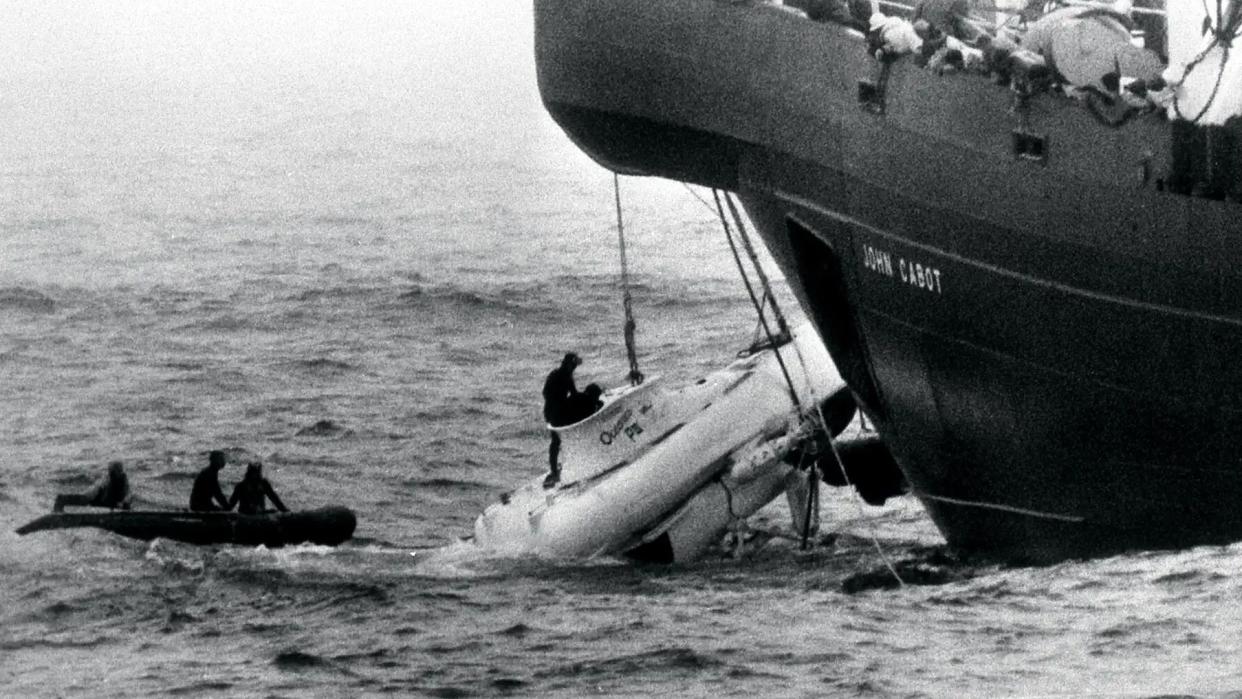
Much of the world’s attention has been captured by the efforts to find the submersible Titan, which went missing while taking tourists down to see the famous sunken wreck of the ocean liner RMS Titanic on Sunday. While hopes of a positive outcome have now evaporated, the situation inevitably recalls another incident, back in 1973, when a similar-sized submersible, Pisces III, was rescued from the seabed in what is still the deepest successful rescue of its kind in history.
Before looking at the rescue of the Pisces III, the latest situation in regards the Titan, originally reported missing about 435 miles south of St John’s, Newfoundland, seems to indicate the move from a search and rescue effort to one of recovery.
https://twitter.com/Maxar/status/1671948558269042688?s=20 https://twitter.com/MarineTraffic/status/1671785812873076737?s=20
According to the U.S. Coast Guard, a debris field that was discovered today within the search area, by a remotely operated vehicle (ROV), is consistent with “a catastrophic implosion of the vessel.” Both titanium ends of the pressure hull were found amid the debris, located around 1,600 feet from the bow of the Titanic.
https://twitter.com/USCGNortheast/status/1671907901542211584?s=20 https://twitter.com/BBCBreaking/status/1671933811846795264?s=20 https://twitter.com/BBCWorld/status/1671959387294801929?s=20
Even if the Titan had been found still intact, the submersible could have been located as deep as around 12,500 feet — where the Titanic wreck lies. Rescuing a submerged vessel from even a tenth of this depth is difficult. But, as the Pisces III incident shows, it’s not impossible.
https://twitter.com/DavidCharmicha2/status/1671476634589843456?s=20 https://twitter.com/SkyNews/status/1671898091639951368?s=20
Developed by Vickers Oceanics, the Canadian Pisces III was a six-foot-diameter deep-sea submersible and, as of August 29, 1973, was being used to lay transatlantic telephone cable on the Atlantic seabed, on behalf of the British Post Office. The two crew aboard were pilot Roger Chapman, a former Royal Navy submariner, aged 28 at the time, and engineer/pilot Roger Mallinson, 35.
The Pisces III began its dive as normal, at 1:15 am on August 29, 150 miles off the coast of Cork, west Ireland.
“It took about 40 minutes to sink down to not far off 1,600 feet and a bit faster to get back up,” Chapman subsequently told the BBC. “We’d do eight-hour shifts, going along the surface of the seabed at half a mile an hour, setting up pumps and jets which liquefied the mud, laying cable, and making sure it was all covered. It was very slow, murky work.”
Even with everything going smoothly, this was far from easy work, with the crew having to contend with very poor visibility throughout.
“It was like driving down the motorway in thick fog and trying to follow a white line — you had to concentrate beyond belief,” Mallinson recalled. “One pilot would have the controls for the sub in one hand and the manipulator — a mechanical hand, which would lift, twist, extend, and move sideways — in the other, then we’d swap,” he explained. “It was also uncomfortable. We had to kneel, with our heads by our knees.”
https://twitter.com/SkyNews/status/1671138730332110850?s=20
Mallinson, however, was even more fatigued than usual, having not slept for 26 hours before this dive, so that he could run repairs on the submersible, which had received some damage to one of its manipulators, during a previous dive.
This repair work may have left Mallinson exhausted, but it almost certainly also saved his and Chapman’s lives.
As part of the repair work, Mallinson also decided to switch out the oxygen tank for a new one. This was by no means easy, due to the weight of the tank, and Mallinson recalled later that it wasn’t actually a pre-requisite of the next scheduled dive. The crew could have begun their August 29 dive without changing the oxygen supply, since, at around half-full, it should have been plenty enough for their planned work.
The Pisces III was back on the surface of the Atlantic when, at 9:18 am, things went badly wrong.
https://twitter.com/DexterSheader/status/1671510775142178818?s=20
While waiting for the towline to be attached to the submersible and lift it back onto the mother ship, the Vickers Voyager, the two crew suddenly felt themselves thrown backward as the Pisces III now dangled upside down.
The submersible’s design included a separate watertight aft sphere containing the machinery. But the towline had apparently snagged the hatch on the aft sphere and water had rushed in, flooding it, and adding around a ton of weight to the Pisces III.
As the submersible plunged into the depths, jolting them around, the crew watched helplessly as the pressure gauges spun around and items broke loose.
https://twitter.com/ConorWilson/status/1671432727822843906?s=20
“As we sank my biggest worry was whether we were anywhere near the continental shelf because if we hit it we’d be crushed,” Chapman recalled.
The crew shut down the electrical systems leaving them in total darkness and jettisoned a 400-pound weight to make the craft lighter.
After around 30 seconds, the Pisces III hit the seabed, coming to rest at 1,575 feet at 9:30 am.
Chapman and Mallinson couldn’t be sure of how deep they were, since they had turned the depth gauge off at 500 feet, concerned that it might have exploded.
As it was, the Pisces III impacted the seabed at 40 mph, a considerable speed, but the crew protected themselves from the impact with cushions and put cloth in their mouths, so they didn’t bite their tongues off.
With only a torch for light, Chapman and Mallinson considered themselves lucky to be alive at this point. They didn’t know that their craft was also wedged in a gully, meaning it was half below the seabed.
Pisces III was able to make telephone contact with the surface and let them know they were okay. At this point, there were 66 hours of oxygen left onboard, with eight already having been used in the dive so far.
With the submersible almost upside down, Chapman and Mallinson now made efforts to try and stabilize the situation, as best they could, as well as check for possible leaks. They also did the best they could to conserve oxygen — above all, by now doing as little as possible, limiting physical movements, and even talking as little as possible.
Already, the situation onboard Pisces III was becoming seriously unpleasant.
Foul, heavy air gathered at the lowest part of the hull, so the crew tried to remain as high above it as they could. They were also cold and wet and Mallinson was still suffering from a bout of food poisoning brought on by a “horrible meat and potato pie.”
Meanwhile, far above them, the rescue effort was now underway.
The U.K. Royal Navy’s Hecla class ocean survey vessel HMS Hecate headed to the area, with recovery ropes. At the same time, a Royal Air Force Nimrod maritime patrol aircraft took up station overhead.
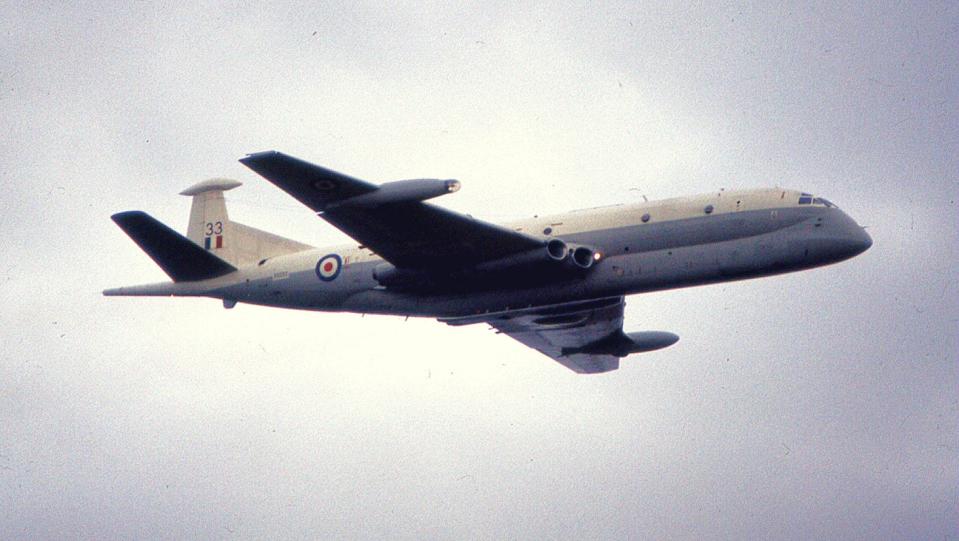
From California, a U.S. Navy CURV III submersible was sent to assist, while the Canadian Coast Guard ship John Cabot also made its way to the area.
https://twitter.com/RLitwiller/status/1671525414139834368?s=20
On the morning of August 30, the mother ship, the Vickers Voyager, seen below, arrived in Cork and there loaded onboard two other submersibles, Pisces II and Pisces V.
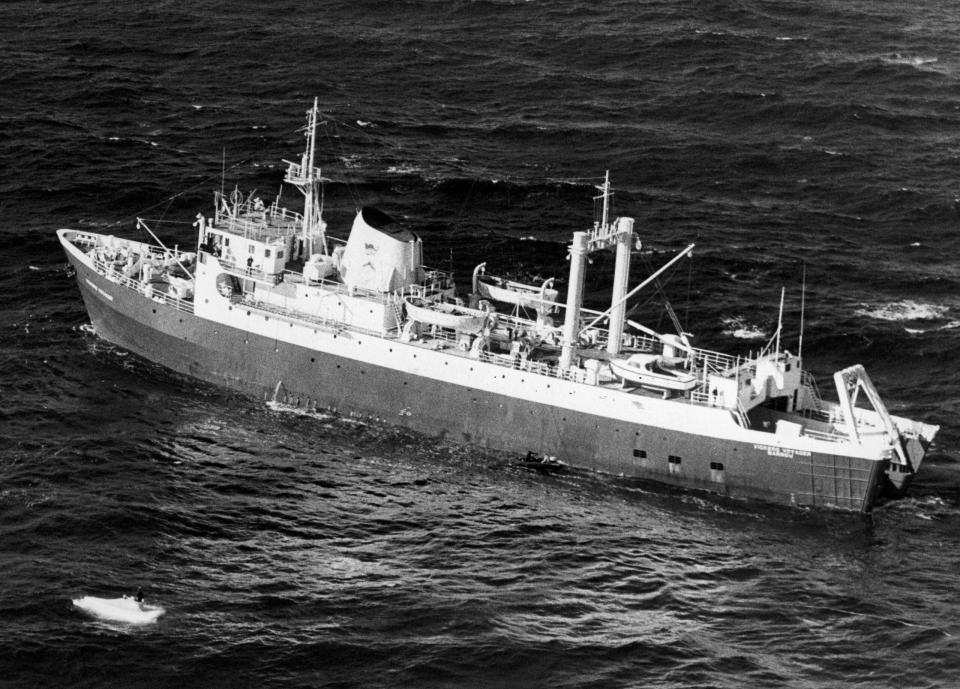
At this point, Chapman and Mallinson were carefully rationing their available food, water, and oxygen. Between them, they had one cheese and chutney sandwich and a can of lemonade, which they were unwilling to consume.
Meanwhile, to conserve oxygen, they carefully allowed CO2 to build up, keeping track of it using egg timers. They were supposed to add new oxygen every 40 minutes, but they now waited longer, which had the effect of making them more lethargic and drowsier.
Their spirits were lifted when a message arrived from ‘Queen Elizabeth II,’ the crew imagining that it was the British monarch herself who’d sent her best wishes. They soon found out it was actually the British ocean liner Queen Elizabeth 2, which had responded to the mayday call.
At 2:00 am on August 31, an attempt was made to launch Pisces II, but the lifting rope used quickly tore and the submersible had to be recovered for repairs.
Pisces V was launched successfully and made it to the seabed but couldn’t find the stricken Pisces III before it ran out of power.
Around 1:00 pm, Pisces V finally found Pisces III on the seabed. However, an attempt to attach a snap hook to secure the stricken craft failed, due to the buoyancy of the rope. Helpless, Pisces V remained with Pisces III, while Pisces II descended again, before it, too, took on water and had to surface again.
The CURV III was now available aboard the John Cabot, but an electrical fault meant it was unable to launch.
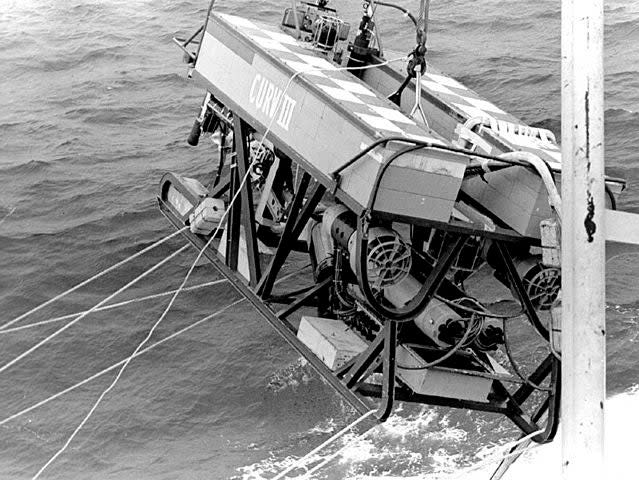
Things were looking bleak as of midnight on August 31, with two broken submersibles, and Pisces V was ordered back to the surface, leaving the rescue attempt back where it had started.
“We were running out of lithium hydroxide to scrub the CO2, it was very manky and cold and we were almost resigned to thinking it wasn’t going to happen,” Chapman remembered.
Finally, just after 5:00 am on September 1, Pisces II succeeded in getting a line on the aft sphere of Pisces II, now using a specially designed toggle and another polypropylene line.
At 9:40 am, the CURV III came down and fixed another line, putting a toggle in the aft sphere opening.
https://twitter.com/NonlinearHorse/status/1671620464429416449?s=20
The two crew were concerned that attaching lines to the weaker aft sphere may not work, but they were confident (and enervated enough) to consume their sandwich and drink.
At 10:50 am, the painstaking process of lifting Pisces III began. Chapman described this as “rough, very disorientating,” and the lift had to be stopped twice during the ascent, once when the CURV III became entangled at 350 feet, and once at 100 feet to let divers attach heavier lift lines.
Then, at 1:17 pm on September 1, the Pisces III, together with Chapman and Mallinson, finally broke clear of the surface. They had been submerged for 84 hours and 30 minutes.
Opening the crew hatch, which had jammed, took another roughly 30 minutes and the Chapman and Mallinson who finally emerged looked — and felt — beaten and battered by the experience.
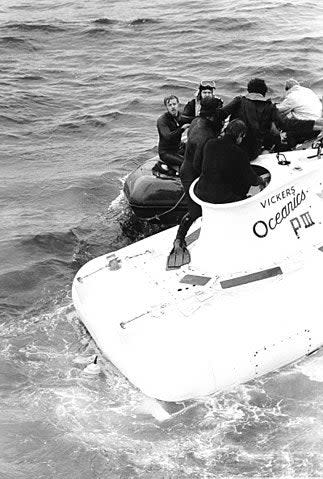
“When they opened the hatch and fresh air and sunlight rushed in it gave us blinding headaches, but we were sorted, we were euphoric,” Chapman remembered. “But we were also a bit pathetic. It was quite difficult to climb out of the sub, we’d been so cramped up, we could hardly move.”
Perhaps most startling about the rescue, aside from the record depth, is the fact that, once they reached the surface, Chapman and Mallinson had only 12 minutes of oxygen left. Their conservation efforts had stretched the planned 72 hours of oxygen by a further 12.5 hours.
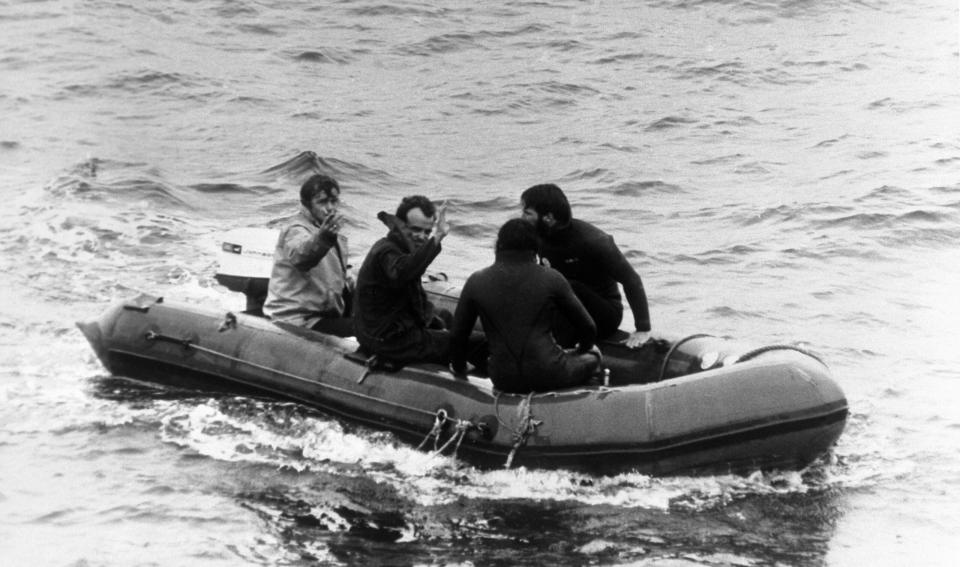
Instead of turning their backs on deep dives, Chapman and Mallinson both continued to work in this area, drawing from their harrowing experiences of the Pisces III mission.

https://twitter.com/bobmackin/status/1671790184051138560?s=20
Chapman soon set up the company Rumic, which provided subsea services and operations for the offshore and defense industries. His expertise saw him involved in the unsuccessful effort to rescue the crew of the Russian Navy submarine Kursk in 2000, while he played a major role in the rescue of the seven-man crew of the Russian Priz class deep-submergence rescue vehicle AS-28 in 2005.
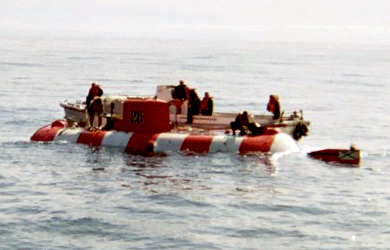
Mallinson continued to work with submersibles for Vickers Oceanics until 1978.
Perhaps understandably, the two men forged a close bond that lasted until Chapman’s death from cancer in 2020.
Mallinson later said: “Roger Chapman [was] a great lad. Somebody else might have panicked. If I could have chosen anyone to go down with it would have been him.”
It is no coincidence, of course, that very similar words were uttered by friends and colleagues of some of the crew aboard the Titan, once it had been posted missing.
Deep-sea exploration is an inherently risky endeavor and when things go wrong, they can very quickly become catastrophic. The story of the Pisces III mission may be little known today, but the bravery and determination of its crew, and those who ensured its rescue, surely serve as inspiration to many others who venture into this perilous realm.
Contact the author: thomas@thedrive.com

